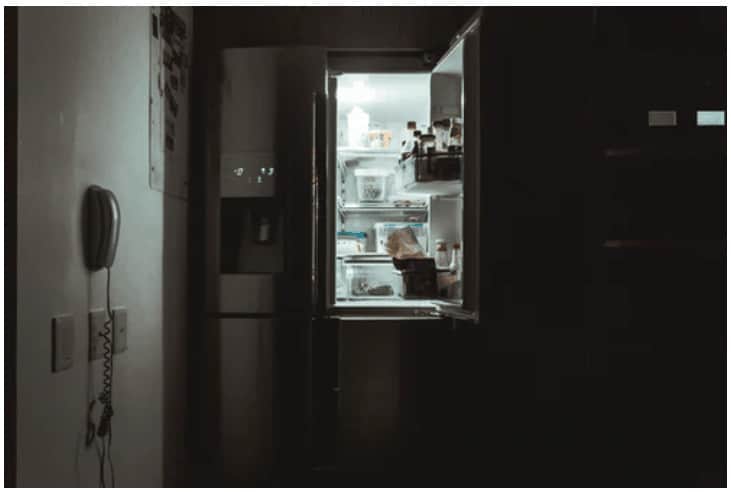
What is Storage Ladder Protocol? Ready to eat foods 1st shelf, 2nd shelf fruits, and vegetables, fish and seafood on the 3rd shelf, 4th beef
Safety is a priority when it comes to food handling. Improper storage can create a breeding space for pathogens, thereby causing foodborne illnesses when consumed. To prevent this, specific guidelines have been put to ensure that food stored and served remains safe and high quality.
STORAGE LADDER PROTOCOL
This protocol shows a set of guidelines for the proper storage of foods in the refrigerator, both prepared and unprepared.
In a refrigerator where there are different shelves, if prepared and unprepared foods are stored carelessly, there is a very high chance of cross-contamination occurring, leading to the spread of disease-causing microorganisms and cause food poisoning. To prevent this, these storage rules were created to ensure the proper storage of foodstuff. It provides a guide as to which foodstuff should be stored above or below in the refrigerator.
Storage Ladder Protocol Guidelines
- Ready to eat foods such as leftovers, packaged foods, etc., are stored on the top-most (first) shelf. This is done to prevent bacteria from raw food from transferring to the cooked food. It is advisable to keep them in well-sealed containers.
- On the second shelf, fruits and vegetables are stored. They should be washed before storage, and if they are wrapped in plastic bags or nylons, holes should be poked through these bags to prevent the fruits and vegetables from becoming stale.
- Fish and seafood are kept on the third shelf to prevent them from dripping onto other foods
- On the fourth, fifth, and sixth shelves, the order in which food should be stored is whole cuts of beef or pork, ground meat, and poultry, respectively. This order is based on the different minimum internal cooking temperature of each food. However, they are stored in sealed containers or sealed plastic bags to prevent their juices from dripping out.

NOTE: The refrigerator should be kept at or below 40° F (4°C).
MINIMUM INTERNAL COOKING TEMPERATURE
This is the least temperature at which pathogens and disease-causing microorganisms are destroyed.
Harmful contaminants are usually invisible to the human eye. They also cannot be perceived or tasted. That is why, according to food safety experts, it is essential to cook food to a safe internal cooking temperature for a long enough time to kill these contaminants and avoid foodborne illnesses. The minimum internal cooking temperature is what determines which food goes above or below on the refrigerator shelves. The foods with higher temperatures go brown while those with the lower temperature go above on the shelves in the fridge.
According to the United States Department of Agriculture (USDA), below are various minimal internal cooking temperatures for several common foodstuffs:

NOTE: A food thermometer is used to measure these temperatures before removing the food from the heat source. The USDA suggests it is advisable to start checking the weather towards the cooking end but before the food is expected to be done.
EXPIRATION DATE
An expiration date is a previously determined date after foodstuffs are not to be used. Simply put, it means when a foodstuff exceeds its anticipated shelf life.
Even though some people still think it is safe to consume foods that are slightly past their expired date, it is advisable not to risk consuming dead foods to avoid food poisoning – “once in doubt, throw it out.”In the meat and fish products where they do not always come with expiration dates, ca change in color is the most significant food indication to longer safe to eat. Also, a foul odor with a ‘slimy or tacky’ feel could be a sure sign that these products have overstayed.
To avoid wastage or to throw out food because of expired dates, if the foodstuff can be frozen, it can be stored in a freezer before reaching the expired dates. This keeps the food fresher, and it is more economical as money is saved, and wastage is prevented.
MEAT SHOULD NEVER BE STORED ON SHELVES
Raw meat should never be stored on furniture-made shelves. They are, however, to be held on shelves in the refrigerator to maintain freshness.
Bacteria naturally exist in raw meat. Therefore it must be stored properly. After sealing the raw meat tightly in a plastic container or nylon bag, it is stored on the fridge’s bottom shelf. This is to avoid the juices from the beef dripping into other foodstuffs, hence causing cross-contamination. Though different types of raw meats (beef, pork, grounded beef, and poultry)can be stored together, they should be kept on other shelves in the refrigerator based on their minimum internal cooking temperature, as seen in fig.1.
MAXIMUM INTERNAL COOKING TEMPERATURE
To ensure maximum food safety, foodstuff can be cooked to temperatures higher than their minimum internal cooking temperature.
It does not matter what temperature the oven or cooker is set at, as long as it exceeds the minimum internal cooking temperature for that food. Increasing the temperature will make food preparation faster. However, it does not mean that the pathogens or microorganisms in the food will be destroyed more quickly. This is because the food might be ready faster, which may mean less time for the pathogens to be eliminated.
There is no graph, table, or chart for the maximum internal cooking temperature. You can choose to use the minimum internal cooking temperature during food preparation or exceed it a bit without getting the food burnt.

